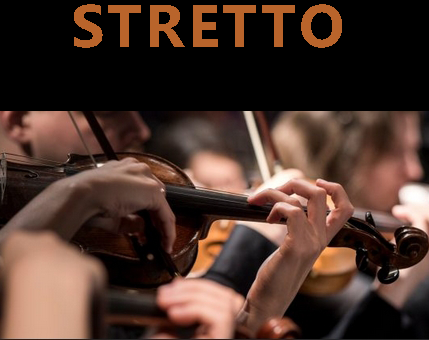Rezension
Diverdi Magazin 173 / septiembre 2008 | Santiago Martín Bermúdez | 1. September 2008
Böhm y las tres panteras
Cada vez más discos de Böhm
La discografía straussiana oficial, legal, de Karl Böhm ya era voluminosa y de enorme interés. Las cintas de radio, las tomas de teatros, las grabaciones más o menos piratas han enriquecido ese legado hasta un punto y unos niveles que acaso lleven a revisar al alza la aportación toda del de Graz a este repertorio. Y a otros repertorios, porque también hay por ahí mucho Beethoven, mucho Wagner de Böhm, que muestran tal vez que en vivo era más él, más artista y más sabio en la sala de conciertos y en el foso que en el estudio de grabación. El propio sello Golden Melodram ya tiene una Elektra dirigida por Böhm (Múnich, 1955, con Goltz, Jean Madeira, Leonie, Uhde y Klarwein). Y tamo Golden Melodram como Orfeo y otros sellos descubren poco a poco, año tras año, nuevos fonogramas del maestro austriaco que, como veremos, gozó de aprecio, respeto y admiración, pero siempre vio que se le negaba la categoría de "genial", reservada para arras. Esos fonogramas son a menudo straussianos, y enriquecen la aportación oficial del maesrro, cuya discografía del músico bávaro se extiende durante décadas, desde los redescubrimientos de los años 40, todavía durante los años del Reich; desde descubrimiemos como estos dos poemas sinfónicos con la RIAS que ahora comentaremos; hasta romas como la de esra Elektra de París que puede provocar no pocas sorpresas.
París, años 70
Un detalle que acaso no tenga demasiada importancia: la fecha que se nos indica para la Elektra parisiense es 21 de abril de 1973; acaso haya un error, y se trate de una fecha posterior más o menos exactamente en dos años. Habría manera de comprobarlo, pero ahora no tengo a mano los daros ni sé cómo buscarlos en Internet. En cualquier caso, ranto abril de 1973 como abril de 1975 significan una cosa, que tanto Birgit Nilsson como Astrid Varnay pueden parecer talluditas para estos cometidos. Pero cuando las oímos comprendemos que aquí la edad es lo de menos; es importante en otro sentido, como ahora veremos. Nacidas en 1918, ambas sopranos dramáticas suecas han transitado a Wagner y han hallado triunfos en determinadas obras de Richard Strauss. Y si las voces han perdido en tersura, en color o en emisión, no han perdido fuerza ni belleza ni capacidad interpretativa. Después de todo, Elektra no es belcantismo, sino todo lo contrario (tampoco se puede despachar gritando, por favor). Pero la capacidad de canto, y de ruptura de ese canto para acentuar la acción y situación dramáticas, eso lo dominan esros dos monstruos suecos. Por lo demás, tanto Elektra como Salomé son papeles de madmez, porque una voz demasiado tierna puede estropearse con esos cometidos exasperados. La propia Nilsson, nos recuerda Leonie R ysanek, esperó a sus cuarenta y muchos para enfrentarse a Elektra. Así la escuchamos en el registro de Solti para la Decca de Culshaw en 1965, esto es, el año en que Birgit cumple 47; el mismo año en que una toma de radio recuperada (como la que comentamos) nos la trae con Karl Böhm, Leonie y Regina Resnik. No ha pasado tanto tiempo entre ese 1965 del registro con Solti y de la roma vienesa con Böhm; estemos en el París del 73 o el del 75, apenas unos añitos no han empañado esa voz que convierte en canto el grito y que se enfrenta a todos y cada unos de los tres grandes personajes de esta tragedia con una capacidad física y una altura artística insuperables. Al lado, en frente, feroz, la Clitemnestra de Astrid Varnay, cantante que fue Elektra en más de una ocasión (se conserva un registro de Radio Colonia, con Leonie Rysanek en Crisotemis y Res Fischer en Clitemnestra, con Hotter todavía por ahí, como Orestes; Richard Kraus, director musical). Varnay impresiona con las oscuridades a las que consigue descender, con el dramatismo doliente y a la vez agresivo de su línea, de la soberbia construcción de su personaje. Todavía hará este papel con Böhm; no nos adelantemos.
Leonie, la dulce
Junto a estas dos panteras suecas nos encontramos a una straussiana de altos vuelos y fidelidad permanente al compositor y al repertorio, la austriaca Leonie Rysanek, ocho años más joven, pero que no las sobrevivió. Adelantemos que su Crisotemis está garantizada con una permanencia de la cantante en este papel durante poco menos de tres décadas. No hace falta indagar más, así que vamos a evocar a es ta cantante de otra manera.
Cuando Leonie hizo en La Zarzuela la Jenufa de Mario Gas, allá por 1993, tuve ocasión de entrevistarla para ABC. Pero recuerdo una entrevista suya espléndida, la realizada por Monique Barichella para L'Avant-Scene Opéra. El título ya lo decía todo: Nacida para cantar Strauss. Era lo que le dijo un día Karl Böhm, que había nacido para cantar Strauss. Y Leonie ha sido Helena en su periplo terapéutico con Menelao; ha sido Arabella, Danae, Ariadne, la Mariscala, la Emperatriz de La mujer sin sombra, e incluso Salomé, papel para el que supo esperar, de acuerdo con sus propios principios y observaciones. Pero, atención, en Elektra ha sido las tres protagonistas. Primero, durante unas tres décadas, interpretó Crisotemis, la dulce y vital, la que pretende huir de la muerte de aquella "casa" y familia. La voz ya algo oscurecida le permitió a Leonie enfrentarse en su madurez a Clitemnestra, pasar al otro lado de la vitalidad, a la lucha a muerte familiar. Y al final de la vida de Karl Böhm, éste le hizo una propuesta sorprendente: por una vez, interpretas Elektra. Cómo. En una película, la que va a rodar Götz Friedrich para Decca.
Un testamento
Así, en 1981, el mismo año en que fallece Böhm, sale esa película en la que está Leonie, a sus 55 años, por una vez y con la posibilidad de descanso vocal entre tomas, encarnando al rabioso retoño de los Átridas. Frente a Leonie, una Clitemnestra de lujo, Astrid Varnay, seis (u ocho) años después de la toma que ahora comentamos. Y Fischer-Dieskau, y Catharina Ligendza. Impresionante Böhm, que en buena medida, al final de su vida, se quita una espina, la de que él, siendo espléndido, no es genial en Strauss ni en otros repertorios que domina sobremanera. Porque ésa es una de las constantes de la crítica y de los aficionados, que Böhm es magnifico, pero no genial, que el genio straussiano es el de Solti, el de Karajan, el de Kempe, el de Clemens Krauss, el de Mengelberg o Fritz Reiner, entre otros.
Ciérrese el largo paréntesis dedicado a la entrañable, adorable Leonie Rysanek, que no olvidemos que también fue una maravillosa Desdémona o una incomparable EIsa. Paréntesis que ha compartido con Böhm por las razones que hemos visto. Y que conste que documentos como la toma parisiense que ahora recibimos demuestran que el director austriaco era un artista y que a menudo también rozaba lo genial, sobre todo en vivo, sobre roda en ese foso desde el que movía los hilos terribles de esta familia. De manera que, si bien no es ésta la referencia de Elektra, título muy bien servido en la fonografía, ni por calidad de sonido ni por otra razones; sí podemos decir que es un magnífico fonograma para el perfeccionamiento de lo que creemos conocer del todo y que aún nos reserva descubrimientos y sorpresas. No olvidemos las interpretaciones de un cantante británico mayor aún que las dos suecas, Richard Lewis, un Egisto histérico, como ha de ser, que todavía hizo este papel unos años después en La Zarzuela, en Madrid (1981, si no me equivoco, cuando se acercaba a los 70); y de uno bastante joven aún, el alemán Hans Sorin (Sarastro, Fafner, Ochs, Marke), que con su voz fuerte, oscura, poderosa, define muy bien su Orestes y redondea este reparto en el que muchos personajes son más o menos jóvenes, pero cuyas líneas, tesituras y alcance son para can tantes maduros. Buena forma relativa de la orquesta de la Ópera de París, en una toma que la prima, curiosamente, con relación a las voces. Ya decimos que, pese a encontrarnos a mediados de los 70 del siglo XX, la calidad de la grabación es inferior a lo que podríamos esperar para esos años. Pero el fonograma es impresionante y de una calidad artística superior.
Autobiografías Sinfónicas
Con las tomas de la RIAS retrocedemos unos 25 años. En el París de los 70 estamos en la paz, la Europa próspera y reconstruida, la reconciliación franco-alemana, todo eso. Pero en 1950-1951 en Berlin estamos en la ciudad sitiada, en la Europa demolida, en los primeros permisos para Böhm y Otros como él después del proceso de desnazificación, del que ahora se ríen muchos, pero que tenía una lógica perfecta, y que no fue llevado demasiado lejos, se diga lo que se diga. Böhm, como otros que se habían beneficiado de las prebendas hitlerianas, tuvo que sufrir un poco, y después se olvidó todo, y aquí no ha pasado nada. No es para quejarse, caramba, después de lo que se había hecho en nombre de Alemania y su cultura. Así que aquí tenemos a Böhm, en 1950-1951, ya "limpio", en Berlín, recién estallada la guerra fría y cambiados los adversarios y enemigos, frente a dos poemas sinfónicos autobiográficos de Strauss; uno, autobiográfico de verdad, el yo ideal o el ideal del yo, el Héroe, el Helden, frente a todos, los filisteos, los críticos y hasta la propia esposa. El otro, automoribundia (por decirlo en términos ramonianos), es una visión de la enfermedad, la crisis y la recuperación, algo que según el Strauss de veras moribundo de 1949 tenía mucho que ver con la realidad de la agonía. Strauss no se cortaba un pelo, como dicen los castizos, y ponía su yo heroico o su yo de mesa camilla (lntermezzo) como ejemplo favorito. Lo transfiguraba en piezas sinfónicas a mitad de camino entre lo puramente descriptivo y rapsódica y el entrevero formal de temas, células, motivos definidos por timbres o por dinámicas. De esos poemas sinfónicos de una época en la que aún no se dedicaba al teatro por completo, Muerte y transfiguración es una de las obras maestras; Vida de héroe es tal vez mayor aún, por capacidad de desarrollo, por conseguir una sinfonía en seis movimientos de desigual duración y no confesada discontinuidad, que se acerca a los cincuenta minutos, como si tal cosa, una obra tensísima , imparable, implacable, una pequeña maravilla 110 años después. Y aquí se requiere al gran concertador, al gran distribuidor de timbres, al maestro de la planificación sonora (que, lógicamente, en un registro como éste se pierde en buena medida), aquí se requiere a un Karl Böhm, alguien que trabajó desde muy joven con Strauss, y al que Strauss apreciaba y admiraba (a diferencia de Furtwängler, con el que no tenía buenas vibraciones, ya saben). Estas dos páginas no nos sonarán nuevas, pero sí claras en su complejidad de temas y colores, claras en su sonido histórico pero de muy buen nivel, claras en su secuencia y en su concepto. Son dos cintas de radio que se grabaron en la ciudad semidestruida y agobiada por el cerco soviético en esos dos años de comienzos de la década de los 50, tras la peor de las guerras. Fue en la Iglesia de Jesucristo, de Berlín-Dahlem, un 25 de marzo de 1950 (Muerte y transfiguración) y el 23 y 24 de abril del año siguiente (Vida de héroe). El aficionado sabe muy bien, sólo por los créditos, por la ficha del disco, si éste merece la pena. Esto es: acaso sobren tantas palabras.







